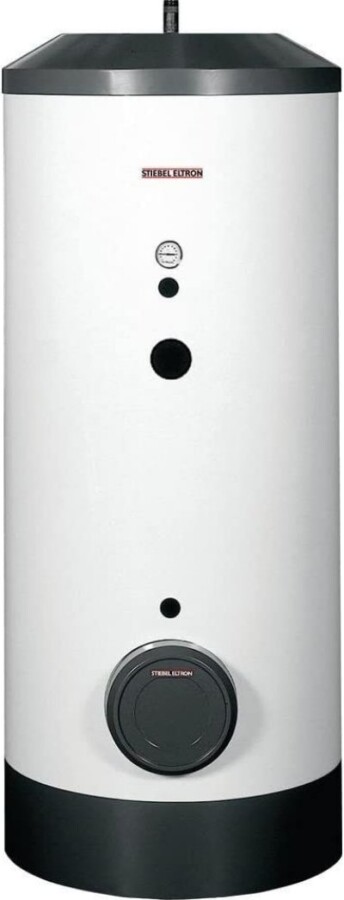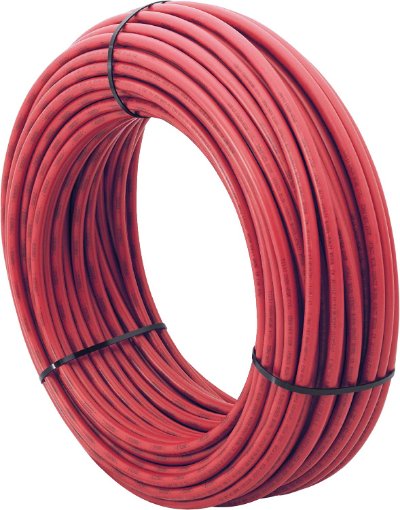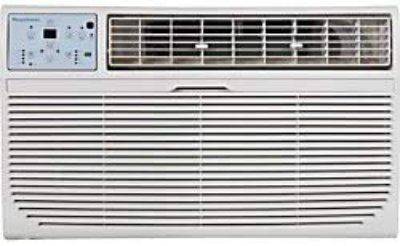Geothermal systems can be a sustainable heating method for greenhouses. Moreover, they can work better than a traditional HVAC system.
Over the decades, most greenhouse owners have used conventional heating, ventilation, and air conditioning systems to regulate greenhouses. But using geothermal systems in your greenhouse is a better option for sustainability.
Here, I will explore the best geothermal greenhouse systems.
Best-Of by Category
| Category | Product |
|---|---|
| Best for Beginners | Shallow Geothermal System |
| Best for Large Scale Projects | Deep Geothermal System |
| Best for Energy Efficiency | Closed-Loop Geothermal System |
| Best for Cost-Effective Installation | Horizontal Geothermal System |
The Best Geothermal Greenhouse Systems
To be honest, you will find the two best methods of geothermal systems for greenhouses: shallow and deep. Lemme break these two for you.
1. Shallow geothermal system

A shallow geothermal system uses a heat exchanger to spread the heat from the Earth’s crust to the greenhouse. Also, it works with low temperature and thermodynamic measurements. It provides support-increasing heat in a convenient environment with free cooling capacity.
In this system, you have to drill down and install the heat exchanger anywhere from 1.5 – 500 meters deep to a temperature of 100-degree celsius for moderate enthalpy and 25 degrees celsius for below moderate enthalpy.
The system contains an air heat transfer capacity. Shallow geothermal heat is suitable for short-term use. It’s better for areas that have tight mining regulations. Overall, it is known as excellent renewable energy for greenhouses.
For this geothermal system, you can try Stiebel Eltron 187874 domestic dual heat exchanger.
See Related: Best Off-Grid Greenhouse Heating Systems
2. Deep geothermal system

Installing deep geothermal energy systems is quite expensive and requires proper planning for a long time. Without planning the installation, you can’t set it up in your greenhouse.
What’s interesting about a deep geothermal system is that it can also work as a forced cooling system. But, like the shallow system, it also produces heat from natural sources.
You don’t have to use any heat exchanger. Here, the natural heat is generated by the abrasion of rock and radioactive particles.
Moreover, it requires a minimum of 4 feet under the ground to absorb the heat from the Earth’s core. Then it needs drilling to install the heat sink under the greenhouse floor.
You can use CONQUER Tools deburring external chamfer tool for drilling, but if you’re going really deep (up to around 16,000 feet) you’ll need to seek permission from your local government.
The thermal system temperature will need to be between 90 to 130 degrees celsius for different enthalpy. This heating system eliminates heavy releases of fuels inside the greenhouse.
Moreover, it operates well at a high temperature. Most geothermal systems are compatible with hot and cold weather. Here is a suggested heat pump from you: Goodman GPH14H.
See Related: Best Greenhouse Floors to Buy Today
Different Types of Geothermal Heating Systems
Geothermal heating systems are categorized into four main types: closed-loop, open loop, vertical and horizontal. Apart from them, you will find also hybrid and fluid systems as well. Choosing any of these methods will help you to heat your greenhouse effectively.
1. Closed-loop

The closed-loop system works with plastic and copper pipes. It helps spread radiant heat through the tubes into the greenhouse. Here, you need to install the pipes inside the greenhouse floors. For this, you can choose SharkBite water tubing and spread them into the plant beds.
It comes with ductwork and fan capacity. Additionally, it operates with a radiant heating mechanism. If the temperature drops, you can easily control the closed loop fans.
See Related: Best Greenhouse Fans to Buy Today
2. Horizontal

Using a horizontal heating system will require closed-loop heat pump. If you dig into the horizontal landscape to use the closed-loop system, it will be what’s known as a horizontal heat pump system. Its heat capacity is similar to the closed-loop system.
A horizontal system can be great for summer cooling and medium temperature. You can choose from many heat pumps, but I suggest Keystone 8000 BTU as a feasible option.
See Related: Greenhouse Costs Guide: Cost to Build, Own and Operate
3. Vertical
The vertical heating system is a blessing for rocky and rugged soils. You need to dig around a hundred feet deep holes with some inches width into the vertical position. Then, install the pipes vertically under the ground. Then it will be considered a vertical heat pump system.
One downside of this system is it can be expensive to afford. Therefore, you better choose the vertical system for residential and commercial applications only.
See Related: Best Boots for Working in a Greenhouse
4. Fluid System

The fluid heating system needs to heat fluid and generate energy in the greenhouse’s soil. However, it is also a part of closed-loop systems. You will need methyl alcohol or propylene glycol to operate the heating system. I would suggest using ACS-Grade methyl alcohol for the operation.
See Related: Best Glass Greenhouses in 2023
5. Open-loop
The open-loop heat pump will help generate geothermal energy if you live near ponds or lakes. Comparatively, this system is more manageable than other options.
Moreover, you can use the open-loop system as a water heater. Here you don’t have to dig a hole to produce the geothermal energy. Instead, it provides power from the heat held in bodies of water.
6. Hybrid

Installing energy curtains with the traditional water loop system is called a hybrid heating system for the greenhouse. It will cost you more than other systems.
The heating method works well for high temperatures. This system is not suitable for low temperatures and new greenhouse.
You can choose Goodman heat pump or Hayward W3HP21404T heat pump for better results.
See Related: Best Energy Efficient Electric Heaters for Large Rooms
What is a Geothermal Greenhouse, and How Does it Work?

A geothermal system is a heating system that generates heat energy from the earth’s core or crust. In a geothermal greenhouse, renewable ground heat spreads through the greenhouse.
Geothermal greenhouses are more energy efficient than ones with regular HVAC systems. For this reason, more homeowners and commercial greenhouse operators are investigating geothermal options to regulate greenhouse temperatures.
The working process of a geothermal system is a simple one. You need to install a tube under the greenhouse floor for a geothermal system to work. It also requires a heat exchanger, heat source, and heat sink.
A geothermal heat pump can quickly heat water and generate energy within the different plants. Water absorbs and conducts heat. Warmer water helps grow plants better than cold water.
Advantages of Geothermal Energy for Greenhouses

You might be wondering why you need geothermal energy in your greenhouse.
Lemme explain.
Geothermal energy provides some advantages for plants. It provides plants, crops, and seedlings with an easily regulated temperature from a more natural and sustainable energy source. As the geothermal system takes power from the Earth’s own heat, it is an eco-friendly system.
Now let’s have a glance at the advantages of geothermal energy for greenhouses.
See Related: Best Off-Grid Greenhouse Heating Systems
It protects crops
The geothermal system creates a shield for ensuring better protection for the crops.
Adding it to your greenhouse will allow you to control the climate which will help eliminate fungus, diseases, pests, and other harmful factors. It also ensures protection against friction in low air temperature inside the greenhouse.
It helps to extend the growing season
Using geothermal energy on your greenhouse plants will allow you to extend the growing season. Thus, it is possible to grow vegetables and fruits even after their season.
It sounds awesome, right?
It can be a great option for commercial and home greenhouse owners.
It reduces gas emissions
Apart from sterilizing the soil, geothermal systems can eliminate unnecessary greenhouse gas discharges. Who doesn’t want to get rid of the extra costs of gas and oil to operate a greenhouse?
See Related: Best Greenhouse Irrigation Systems
The Life Expectancy of a Geothermal System

After installing a geothermal system, most people are worried about life expectancy. To reassure you, these systems generally have a life expectancy of 25 years. On top of that, some heating systems are slated to last for 50 to 100 years!
How to Build Geothermal Energy in a Greenhouse?

Building geothermal greenhouses isn’t an easy task. Most commercial greenhouses use geothermal energy and are becoming more popular with home greenhouse owners.
Let’s learn the steps of building geothermal greenhouses.
Step 1: Examine the greenhouse ground
Before digging, you must examine your greenhouse’s location and see if the Earth is viable for a geothermal system. Check the building space and measure the depth under the ground and maximum soil temperature.
Step 2: Know the water table
Before digging, you need to understand the water table. Otherwise, you could miss out on using the water’s geothermal energy, or risk flooding the system.
Step 3: Dig the hole
At this point, you must dig the hole five feet above the water source. Keep digging until you reach the highest surface that is needed.
Step 4: Circulate the pipes
Circulate the pipes into the raised beds. When choosing the pipes, I recommend polycarbonate plastic tubes, corrugated plastic tubes, or galvanized ones. These pipes help to gather maximum geothermal heat. And also spread the small diameter underground pipes.
Step 5: Install the heat exchanger, or sink
Deep geothermal works with rocks and the earth’s crust. Shallow geothermal uses an air heat exchanger. Now you must install a geothermal system compatible with your greenhouse. You can also use an open-loop system. In that case, set the pipes under the pond or lake.
Step 6: Cover the holes
Lastly, you have to cover the holes in the ground. Then, your geothermal energy is ready to use in your greenhouse. The heated water will circulate to the raised beds and other plant tubs. The hot water will energize the soil surface as well.
Advantages of Geothermal Systems for Greenhouses

Though geothermal systems are a bit expensive, they are more reliable for heat production. But you can choose the one you can afford. Before heating a greenhouse, you must check the maximum surface temperature.
This vast reservoir of thermal energy works excellent for winter heating. Want to heat your greenhouse without any hassle?
Choosing any geothermal system will benefit your greenhouse in many ways.
Most geothermal sources work with a climate battery. Therefore, selecting a cool building space is essential for spreading the cooling capacity of the greenhouse.
In that case, geothermal will keep your greenhouse cool in the excessive summer heat. If you replace your existing greenhouse, then reform it with geothermal energy. Alternative heating systems are not as reliable as geothermal ones.
Disadvantages of Geothermal Energy on Greenhouses

Despite the noticeable advantages, there are also some cons of geothermal energy.
- Geothermal energy has some environmental side effects.
- Geothermal energy is expensive to some extent.
- Geothermal energy doesn’t come with a portability option.
- The digging is difficult and expensive for numerous reasons
Final Thoughts
To conclude, open-loop systems are convenient for budget-friendly geothermal heating systems. In the case of effectivity, closed loops work better.
Installing geothermal energy will increase the workability of your greenhouse. Also, geothermal promotes plant growth to a certain level. So it will be a game-changer for residential and commercial greenhouse owners.
That’s all, buddy! Adios, and happy growing!
FAQs
How deep do you have to dig for geothermal cooling?
When digging for geothermal cooling, you must dig a minimum of four to six feet and a maximum of around 16,000 feet. Digging any deeper than 150 feet will require permission.
What type of soil is best for geothermal?
The soil surface should contain dense bulk and high water quality capacity.
Is sand good for geothermal?
Yes. It is essential to cover the loop and protect it from heavy rocks.
What is the best climate for geothermal energy?
The tropical season is the best climate for geothermal energy.
Does geothermal use a lot of electricity?
No. It requires one kilowatt electricity per hour.
Related Resources
- Best Aquaponics in a Greenhouse
- Best Greenhouse Windows: Ideas & Unites to Use
- How to Winterized a Greenhouse [Step-by-Step Guide]
- Best Greenhouse Plastic Sheets for Protection


